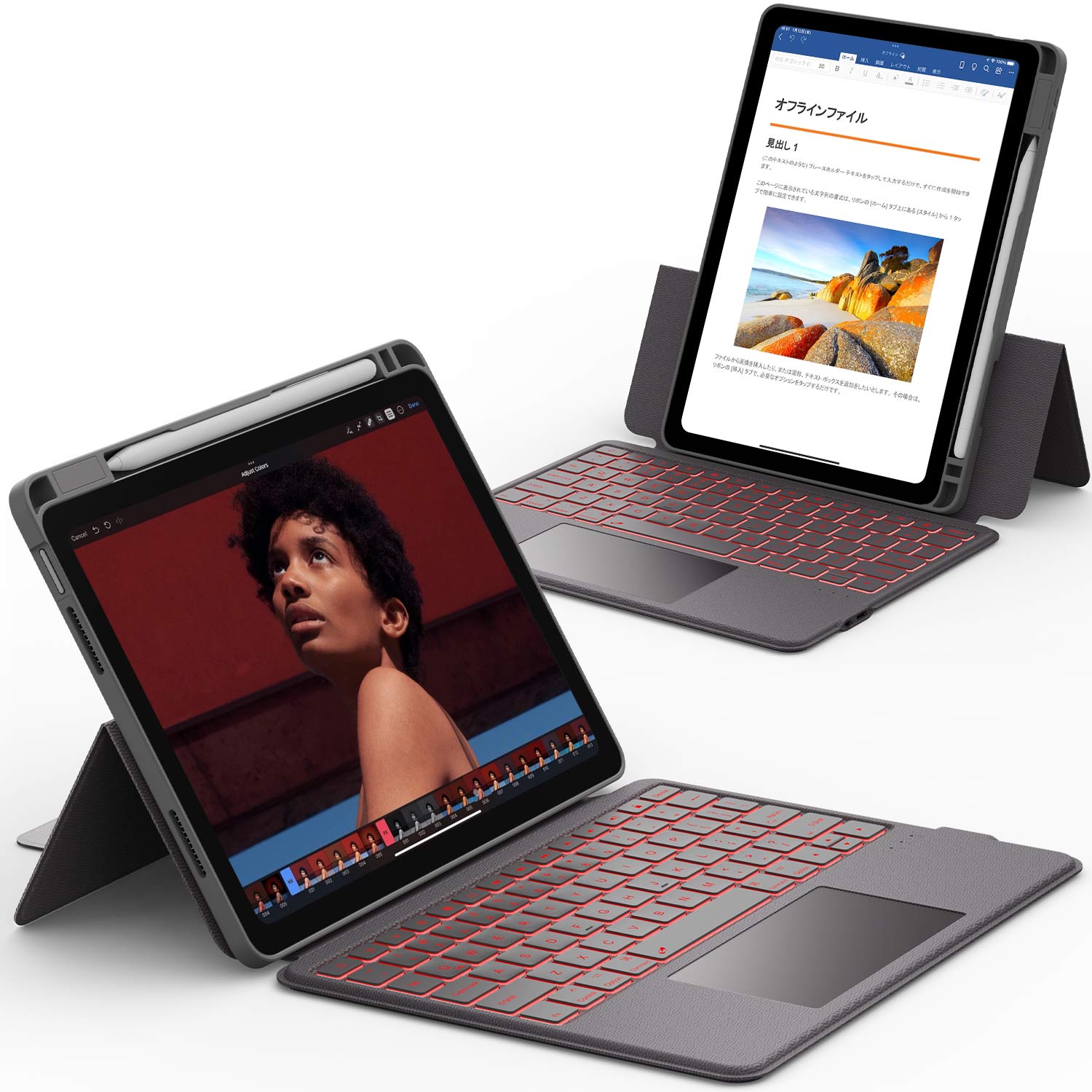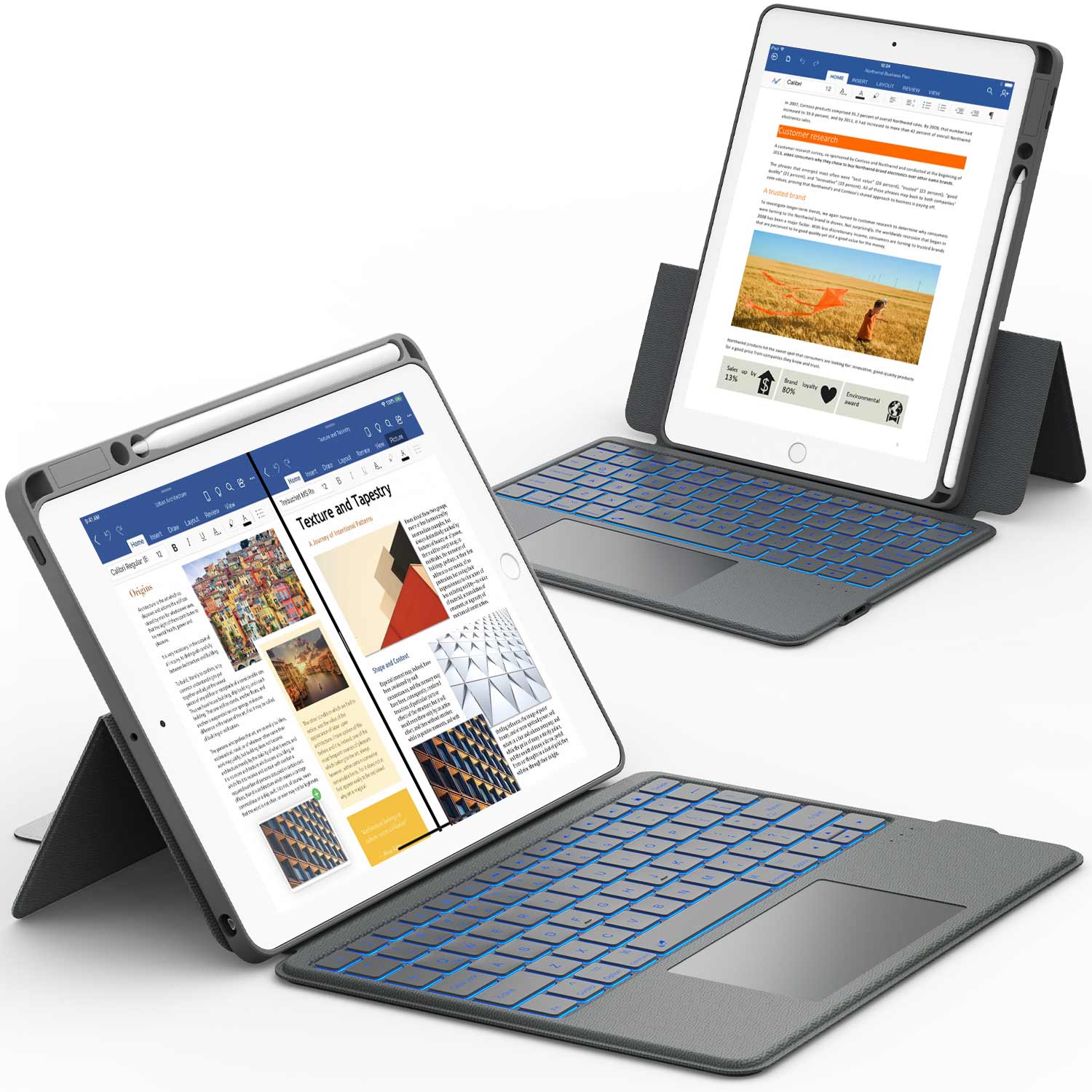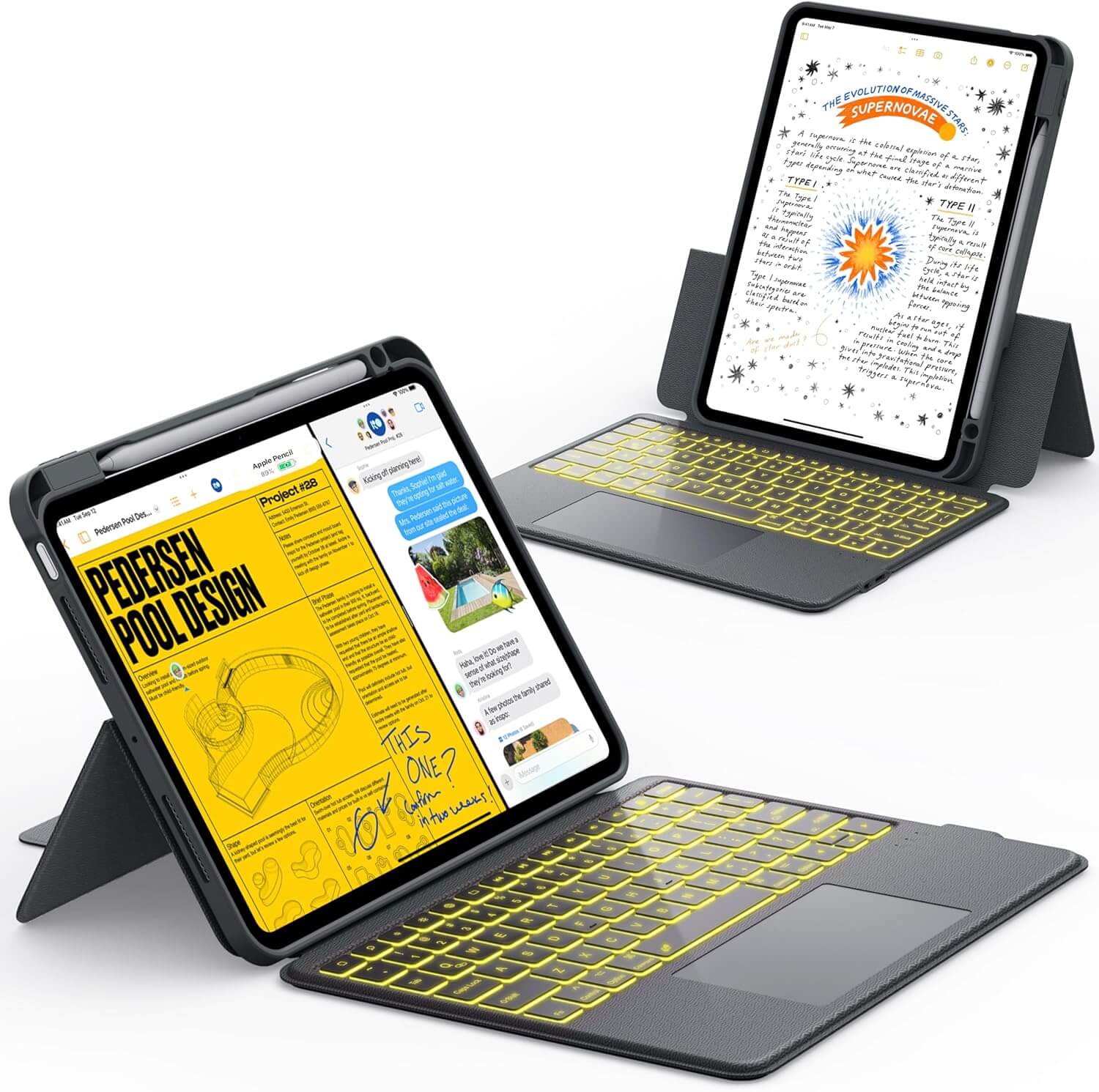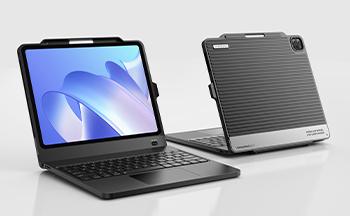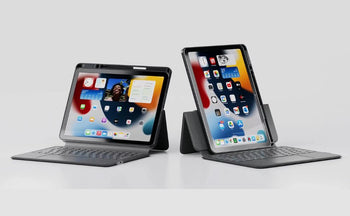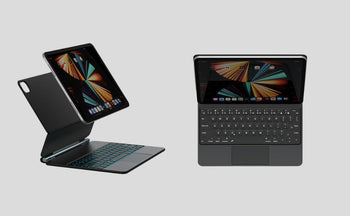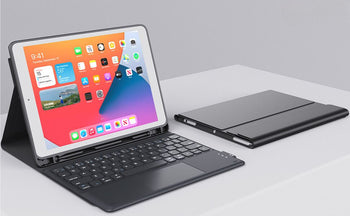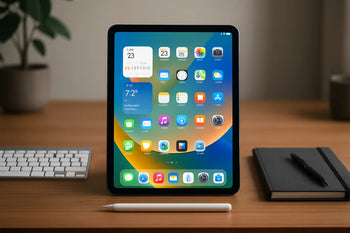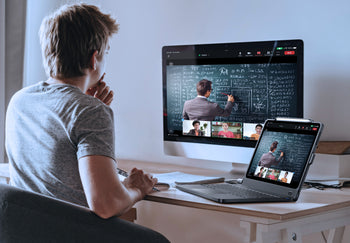Trying to pick between a Samsung tablet and an iPad can feel a bit overwhelming, right? Both brands make some really good devices, and it's tough to figure out which one is actually better for what you need. Are you looking for something that just works for everyday stuff, or do you need a powerhouse for creative projects? This article will break down the main differences in things like their screens, how fast they run, and what kind of software they use. We'll help you sort through all the options so you can confidently pick the tablet that's just right for you.
Key Takeaways
- Samsung tablets often have vibrant OLED screens, great for watching movies, while iPads usually have higher resolution LCDs that are good for detailed work.
- iPads typically have more powerful processors, making them better for heavy tasks like video editing, even though Samsung tablets might have more RAM.
- iPadOS is known for its smooth, optimized app experience, but Android on Samsung tablets offers more customization.
- Samsung tablets come with the S Pen and features like DeX mode, which are good for productivity; Apple Pencil for iPads is usually sold separately.
- Consider what you'll use the tablet for most: iPads are often preferred for creative work and a simple experience, while Samsung tablets offer more flexibility and value, especially with expandable storage.
Display Technology and Visual Experience

Screen Quality and Display Features
When you're looking at tablets, the screen is a big deal. It's how you interact with everything, so you want it to look good. Both Samsung and Apple put a lot into their displays, but they go about it in slightly different ways. Apple tends to use LCD or mini-LED (on the Pro models), focusing on color accuracy and resolution. Samsung often uses OLED, which gives you those super deep blacks and vibrant colors that some people love. It really comes down to personal preference.
OLED Versus LCD Screen Technologies
Okay, so what's the real difference between OLED and LCD? LCDs are pretty standard; they use a backlight to light up the screen. OLEDs, on the other hand, have pixels that light up individually. This means OLED screens can turn off pixels completely, giving you true blacks and better contrast. OLEDs are great for watching movies or anything with dark scenes. LCDs can be brighter overall and sometimes more color accurate, which is important for things like photo editing. It's a trade-off.
Color Accuracy and Resolution Differences
Color accuracy is how well the screen shows colors as they truly are. Resolution is how many pixels are on the screen, which affects how sharp the image looks. Apple often goes for high color accuracy, which is why their iPads are popular with creative professionals. Samsung usually aims for vivid, punchy colors that might not be 100% accurate but look great to most people. Higher resolution makes everything look sharper, but it also uses more battery.
Choosing between a Samsung tablet and an iPad based on display really depends on what you value most. If you want super accurate colors for professional work, an iPad might be better. If you want a screen that makes movies and games pop, a Samsung tablet with an OLED display could be the way to go.
Performance and Processing Power
Speed and Power Comparison
When you're deciding between a Samsung tablet and an iPad, one of the first things to consider is how fast they are. It's not just about opening apps quickly; it's about how well they handle demanding tasks like video editing or playing graphic-intensive games. The raw processing power makes a big difference in your overall experience.
- Everyday tasks: Both are generally fine.
- Demanding apps: iPads tend to have an edge.
- Long-term use: Processing power becomes more noticeable over time.
Processor Performance: Apple Chips Versus Qualcomm Snapdragon
Apple uses its own silicon, the A-series or M-series chips, which are known for their speed and efficiency. Samsung, on the other hand, usually goes with Qualcomm Snapdragon processors. Here's a quick rundown:
| Feature | iPad (Apple Chips) | Samsung (Snapdragon) | Advantage |
|---|---|---|---|
| Processor | A-series/M-series (e.g., A17 Pro, M2) | Snapdragon (e.g., 8 Gen 2, 8 Gen 3) | Varies by generation, generally comparable |
| Typical RAM | 4GB - 16GB | 6GB - 16GB | Samsung often offers more RAM |
| Best For | Demanding tasks, creative work | Multitasking, everyday use | Depends on the specific model and use case |
It's worth noting that while benchmarks can give you an idea of performance, real-world usage can vary. Software optimization also plays a big role. Sometimes, a less powerful chip that's well-optimized can feel faster than a more powerful one that isn't.
RAM Differences and Multitasking Capabilities
RAM (Random Access Memory) is important for multitasking. More RAM means you can have more apps open at the same time without slowing down your tablet. Samsung tablets often include more RAM than iPads at similar price points. For example, the iPad excels in demanding tasks such as video editing due to its speed-focused design. This can be a real advantage if you tend to juggle multiple apps or browser tabs.
- iPads: Typically offer 4GB to 16GB of RAM.
- Samsung Tablets: Often match or exceed iPad RAM, sometimes offering 8GB or even 12GB in mid-range models.
- Multitasking: More RAM generally leads to smoother multitasking.
Operating Systems and User Experience
Software: iPadOS Versus Android Experience
Okay, so when it comes to the software, it's really a battle between iPadOS and Android (with Samsung's One UI on top). iPadOS is known for being super smooth and easy to use, especially if you're already in the Apple ecosystem. Everything just seems to work together. Android, on the other hand, gives you a lot more freedom to mess around and change things to your liking. It really comes down to what you prefer. Apple's integration and polish put the iPad ahead.
App Optimization and Ecosystem Differences
One thing to think about is the apps. iPads tend to have better-optimized apps, especially for creative stuff like graphic design or video editing. There are more pro-level apps available. Android has a ton of apps too, but they might not always be as polished as the iPad versions. Plus, the Apple ecosystem is pretty tight. If you have an iPhone, Apple Watch, or Macbook, everything syncs up super easily. Android is more open, so it plays nicer with different kinds of devices, but it might not be as seamless.
Customization and User Interface Flexibility
If you're someone who likes to tweak every little thing, Android is definitely the way to go. You can change almost anything about the way it looks and works. iPadOS is more locked down. You don't get as much freedom to customize, but that also means things are usually more stable and consistent. With Android, you can use widgets, custom launchers, and even sideload apps that aren't in the Google Play Store. iPadOS is more about keeping things simple and user-friendly, even if it means sacrificing some flexibility.
Ultimately, the best operating system for you depends on your personal preferences and what you need your tablet to do. If you value simplicity and a smooth, integrated experience, iPadOS might be a better fit. If you want more control and customization options, Android could be the way to go.
Productivity and Creative Tools

Stylus Integration: Apple Pencil Versus S Pen
When it comes to stylus support, both Apple and Samsung bring something unique to the table. Apple's Pencil, especially on the iPad Pro, is known for its precision and low latency, making it a favorite among artists and designers. The responsiveness is top-notch, and it feels incredibly natural to sketch or write on the screen. Samsung, on the other hand, includes the S Pen with many of its Galaxy Tab models, which is a huge plus for budget-conscious users. You don't have to shell out extra cash to get a stylus. While the S Pen might not have the exact same level of responsiveness as the Apple Pencil, it's still a very capable tool for note-taking, drawing, and navigating the interface. It really comes down to personal preference and what you plan to use the stylus for.
Multitasking Features and DeX Mode
Multitasking is where things get interesting. iPads have Stage Manager and Split View, which let you run multiple apps side-by-side or in floating windows. It's a decent system, but some people find it a bit clunky. Samsung tablets, however, offer a more computer-like experience with DeX mode. DeX transforms the tablet's interface into a desktop environment, complete with resizable windows, a taskbar, and keyboard/mouse support. It's a game-changer for productivity, especially if you're used to working on a traditional computer. You can easily switch between apps, manage files, and even connect to an external display for a larger workspace. It really blurs the line between tablet and laptop.
Boost your tablet’s productivity with the Chesona Keyboard Case! Whether you’re multitasking on a Samsung tablet with DeX mode or an iPad with Stage Manager, this sleek case adds a responsive keyboard and sturdy protection, perfect for work or creative projects.
File Management and Expandable Storage
File management is another area where Samsung tablets have a clear advantage. Android's file system is much more open and flexible than iPadOS. You can easily access files, transfer them between devices, and even use expandable storage via microSD card. iPads have improved their Files app over the years, but it still feels more limited compared to Android. If you work with a lot of different file types or need to transfer files frequently, a Samsung tablet might be a better choice. The expandable storage is also a huge benefit, especially if you plan to store a lot of large files like videos or photos.
Choosing between an iPad and a Samsung tablet for productivity and creative tasks really depends on your specific needs and workflow. If you prioritize stylus precision and a wide selection of creative apps, the iPad might be the better choice. But if you need a more computer-like experience with flexible file management and expandable storage, a Samsung tablet with DeX mode could be a better fit.
Educational and Academic Applications

School and Study Applications
When it comes to school and study, both iPads and Samsung tablets bring something to the table. iPads often get educational apps first, probably because Apple has always focused on education. This means you might find more specialized learning tools on an iPad. For example, there are many apps designed specifically for subjects like math or science that might appear on iPadOS before Android. Samsung tablets, on the other hand, sometimes offer better value. You might get more storage for the same price, which is great if you're dealing with lots of large files or textbooks.
Choosing between an iPad and a Samsung tablet for school really depends on what you need. If you want the latest educational apps and long-term software support, the iPad is a solid choice. If you need more flexibility with file management and don't want to pay extra for a stylus, a Samsung tablet could be a better fit.
Here's a quick rundown:
- iPads: More education-focused apps, better note-taking with Apple Pencil, longer software support.
- Samsung Tablets: Better multi-window support, more flexible file management, S Pen included.
Educational App Availability and Support
One thing to consider is how quickly new apps show up on each platform. iPads tend to get the edge here. Because Apple has a strong focus on education, developers often prioritize iPadOS when releasing new educational software. This can mean that you'll find a wider range of apps, and sometimes even exclusive apps, designed for learning on the iPad. Samsung's app store is catching up, but it might not always have the same selection. Also, iPads are known for getting software updates for a long time – often five years or more. This means your tablet's longevity is extended, and you'll keep getting the latest features and security updates, which is important for schoolwork.
Note-Taking Features for Students
Both iPads and Samsung tablets are pretty good for taking notes, but they approach it differently. The iPad is often paired with the Apple Pencil, which is sold separately. The Apple Pencil is known for its precision and responsiveness, making it feel more like writing on paper. There are also tons of note-taking apps on iPadOS that are optimized for the Apple Pencil. Samsung tablets usually come with the S Pen included, so you don't have to buy it separately. The S Pen also works well for note-taking, and Samsung's software often has features like the ability to quickly jot down notes on the screen without even opening an app. Plus, Samsung's multi-window support can be really handy for research, letting you have your notes open side-by-side with a website or document. Ultimately, the best choice depends on your personal preference and how you like to take notes. If you want engineering colleges, consider the iPad.
Taking notes on your iPad or Samsung tablet? Pair it with a Chesona Keyboard Case to type essays or organize study materials effortlessly. Its lightweight design and reliable keys make it a student’s best friend.
Entertainment and Media Consumption

Gaming Performance and Optimization
Okay, so when it comes to gaming, both Samsung tablets and iPads bring something to the table, but they do it in different ways. iPads, especially the ones with the M-series chips, are absolute beasts when it comes to raw power. You can throw pretty much any mobile game at them, and they'll handle it without breaking a sweat. The app optimization for iPadOS is generally top-notch, meaning games are often specifically tailored to run well on Apple's hardware. Samsung tablets, on the other hand, are no slouches either. They often use Qualcomm Snapdragon processors, which are also very capable, and some Samsung tablets even have features like game boosters that try to optimize performance and reduce distractions while you're playing. It really comes down to what games you play and how much you care about having the absolute highest frame rates and graphical settings.
- iPad:
- Excellent performance with M-series chips.
- Optimized game support.
- Strong ecosystem.
- Samsung:
- Good performance with Snapdragon processors.
- Game booster features.
- Expandable storage for games.
Movie Watching Experience and Display Quality
For watching movies, the display is king, right? And this is where things get interesting. Samsung tablets often use AMOLED displays, which means you get incredibly vibrant colors, deep blacks, and just an overall punchier image. iPads, especially the higher-end ones, also have fantastic displays, often with excellent color accuracy and brightness. The choice here really depends on your personal preference. Do you want those super-saturated colors that pop off the screen, or do you prefer something a bit more natural and true-to-life? Also, consider the aspect ratio. iPads have a more square-ish aspect ratio (4:3), which is great for browsing and reading, but it can mean you get black bars when watching widescreen movies. Samsung tablets often have a wider aspect ratio (16:9 or similar), which fills the screen better for movies. The iPad is generally preferred by professionals.
Ultimately, both offer a great viewing experience, but with slightly different strengths. Samsung leans towards vibrant, immersive visuals, while Apple focuses on color accuracy and brightness.
Audio Capabilities and Speaker Quality
Don't underestimate the importance of good audio! Both Samsung and Apple have been stepping up their game in this department. Many of the newer tablets from both brands have multiple speakers, often tuned by audio specialists, to give you a wider and more immersive soundstage. The placement of the speakers also matters. Some tablets have speakers on the front, which is ideal for direct sound, while others have them on the sides or bottom. The quality of the DAC (digital-to-analog converter) also plays a role in how clean and detailed the audio sounds, especially when using headphones. If you're a big music lover or movie buff, it's worth paying attention to the audio specs and maybe even trying out the tablets in person to see which one sounds better to your ears.
Here's a quick comparison:
| Feature | iPad | Samsung Tablet |
|---|---|---|
| Speaker Count | Typically 2-4 | Typically 2-4 |
| Speaker Tuning | Often tuned by Apple | Often tuned by AKG or other audio brands |
| Headphone Jack | Some models, requires USB-C adapter | Some models, often USB-C |
| Audio Technology | Spatial Audio support on some models | Dolby Atmos support on some models |
Value and Ecosystem Considerations
Pricing and Storage Options
Okay, let's talk money. When you're looking at tablets, the price tags can vary wildly. It's not just about the base price; you've gotta factor in storage. Are you a digital packrat who needs a ton of space for videos and games? Or are you more of a cloud-storage person? That'll impact your decision. iPads tend to start at a higher price point, and the cost increases significantly as you go up in storage. Samsung tablets often offer more competitive pricing, especially when you consider expandable storage via microSD cards. This can be a huge advantage if you don't want to shell out extra for built-in memory.
Maximize your tablet’s value with the Chesona Keyboard Case! Affordable and versatile, it transforms your iPad or Samsung tablet into a productivity hub, perfect for typing, studying, or managing files. Discover the perfect fit for your budget at Chesona’s website!
Long-Term Software Support and Updates
How long will your tablet stay relevant? That's the big question when it comes to software support. Apple has a pretty solid track record of providing updates for their iPads for many years. This means you'll get the latest features, security patches, and performance improvements, keeping your device running smoothly for longer. Samsung has improved its update game, but historically, their Android tablets haven't always received updates as consistently or for as long as iPads. This is something to seriously consider if you plan on keeping your tablet for several years. A lack of updates can lead to security vulnerabilities and compatibility issues down the road.
Integration with Existing Devices and Services
Think about the other tech you already own. Are you all-in on Apple, with an iPhone, MacBook, and Apple Watch? If so, an iPad will likely integrate more seamlessly into your existing ecosystem. Features like Handoff, AirDrop, and shared iCloud storage make it easy to switch between devices and access your files. Samsung tablets, on the other hand, play nicely with other Android devices and services. If you're a Google user, with a Gmail account, Google Drive, and other Google apps, a Samsung tablet might be a better fit. Plus, Samsung offers its own ecosystem of apps and services, like Samsung Cloud and Samsung Health, which can be useful if you already use other Samsung products. Ultimately, the best choice depends on your current tech setup.
It's worth thinking about the resale value, too. iPads tend to hold their value better than Samsung tablets, so if you plan on upgrading in a few years, you might recoup more of your initial investment with an iPad.
Here's a quick rundown:
- Apple Ecosystem: Seamless integration with iPhones, MacBooks, and other Apple devices.
- Google/Android Ecosystem: Works well with Android phones, Chromebooks, and Google services.
- Samsung Ecosystem: Integration with Samsung phones, TVs, and other Samsung smart devices.
Conclusion
So, when it comes down to picking between a Samsung tablet and an iPad, it's really about what you need. If you like having lots of choices, being able to change things around, and maybe saving a bit of money, Samsung might be your best bet. Their tablets often give you more freedom with how you use them. But if you're all about things just working, super smooth performance, and a simple setup, then an iPad is probably the way to go. Apple's stuff is known for being easy to use and very reliable. Both are good, but they're good in different ways. Think about what you'll actually use it for, and that should help you decide.
Frequently Asked Questions
Which tablet is easier to use for a beginner?
For most people, iPads are often easier to use right out of the box because of their simple design and smooth software. Samsung tablets, running Android, offer more ways to change things to your liking, which some users really enjoy.
Are iPads or Samsung tablets better for students?
If you're a student, both are great. iPads often have more special learning apps and better tools for taking notes with the Apple Pencil. Samsung tablets are good for using many apps at once and come with the S Pen for free, which is handy for notes.
Which tablet has more power for demanding tasks?
If you want top-notch power for tough tasks like editing videos, iPads usually win with their super-fast M-series chips. Samsung tablets are also powerful, but Apple's chips often have an edge in raw speed.
Which tablet has a better screen for watching movies?
Samsung tablets often use OLED screens, which make colors pop and blacks look super dark, great for watching movies. iPads use LCDs, but their Pro models have mini-LEDs, offering great colors and brightness, making them good for detailed work like drawing.
Can I add more storage to a Samsung tablet?
Yes, most Samsung tablets let you add more storage with a tiny memory card, which is great for keeping lots of photos and videos. iPads do not have this option; you have to pick the storage size you need when you buy it.
Which tablet gets software updates for a longer time?
Apple usually provides software updates for iPads for a longer time, often five years or more. Samsung also gives updates, but they might not last as long as Apple's. This means an iPad might stay up-to-date and secure for a longer period.
